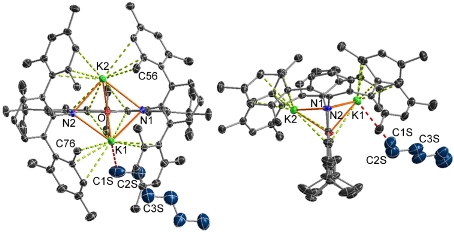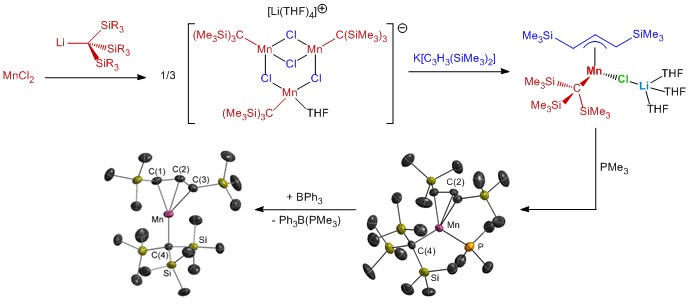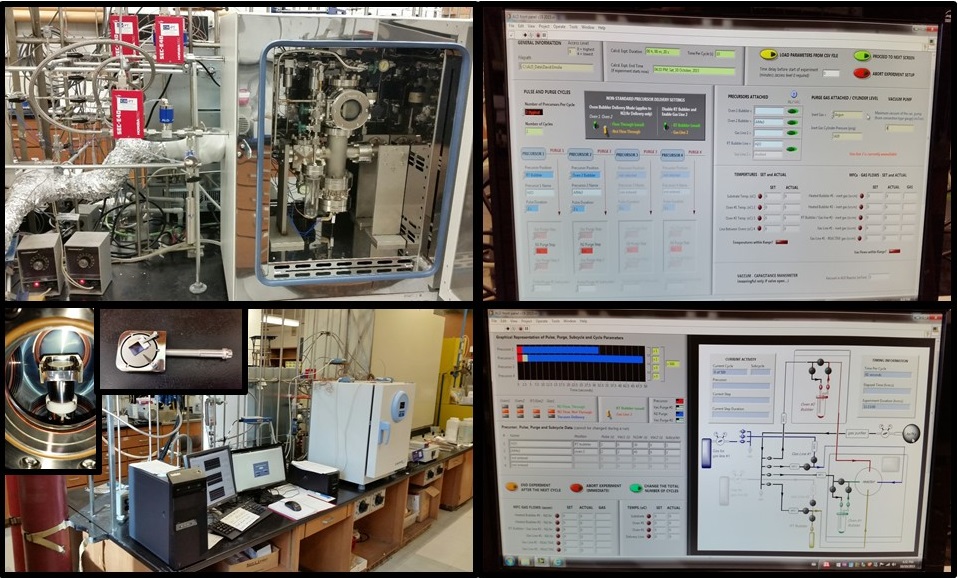Emslie Group - Research |
| Home | Emslie CV | Research | Publications | Conferences | People | X-Ray Structures | Techniques | Journals | Links |
Research in the Emslie group is focused in 3 areas: (1) Electropositive Metal Complexes of Extremely Rigid Pincer Ligands: Organometallic Reactivity and Alkane Complexes. Each of the above topics combines fundamental/exploratory organometallic chemistry with at least one target application that has not yet been realized, and is of high current importance. These 3 research areas are described in more detail below: |
(1) Electropositive Metal Complexes of Extremely Rigid Pincer Ligands All pincer ligands employed in this research are of our own design. These ligands are based on a highly rigid tricyclic backbone (e.g. a xanthene, thioxanthene or acridanide backbone) in order to provide access to coordination environments which are dictated by design rather than the preferences of the central metal, to ensure that steric bulk is positioned so as to maximize its effectiveness, and to create a rigid hydrophobic pocket around the metal center. Sample ligands are shown here:
Our rigid pincer ligand research is divided into two themes (a and b below): (a) Thermally Robust Rare Earth and Actinide Complexes for Small Molecule Activation and Catalysis Our current research involves thorium, uranium and/or yttrium, and is focused on the synthesis of thermally robust neutral and cationic alkyl, allyl and hydride complexes. Rigid pincer ligand dianions are most suitable for development of the chemistry of tetravalent actinide metals, while monoanions are better suited for the synthesis of trivalent rare earth complexes with two reactive valences. New alkyl and hydride compelxes are investigated for applications in olefin polymerization and hydroamination, with a focus the development of catalysts with stability at high temperature. An example of cation and dication synthesis by single and double alkyl anion abstraction from thorium is shown below:
(b) Metal-Alkane Complexes The dipotassium salt of the highly rigid XAT pincer ligand (shown above) was crystallized as from hexane/toleune, and an X-ray structure of This work provided the first examples of main group metal–alkane interactions, and is only the fourth report of metal–alkane interactions observed in the solid state (the other examples are an iron complex reported by Reed, uranium complexes reported by Mayer, and a rhodium complex reported by Weller). Our current research is focused on further developing the chemistry of the XAT ligand, and related pincer ligands, for the systematic synthesis of metal–alkane complexes differing in the identity of the central metal. Interactions of this type are of great interest given their involvement en-route to alkane C–H bond activation; an economically and environmentally attractive prospect, when coupled with functionalization.
|
(2) Group 13 Lewis Acid Appended Transition Metal Complexes: Studies of Metal-Ligand Bonding and Cooperative Catalysis. In 2006, we reported a rare example of an isolable ambiphilic ligand, TXPB (shown below), which contains a phosphine, a thioether, and a triarylborane. This ligand yielded the first examples of η3BCC-arylborane complexes, and also allowed exploration of a broad range of metal–X–borane (X = F, Cl, Br and I), metal–enone–borane and metal–isonitrile–borane interactions in complexes of Rh, Ni, Pd and Pt. These studies provided a detailed picture of the behaviour of pendent arylborane Lewis acids in combination with a variety of metals and co-ligands. However, the Achilles heel of the TXPB ligand is the central thioether donor, which readily dissociates from the metal centre. To address this limitation, a new much more electron-donating borane-containing ambiphilic ligand, FcPPB (shown below), was prepared. FcPPB and TXPB are the only tridentate ambiphilic ligands in which a borane is positioned at the extremity of the ligand framework; this is desirable as a means to encourage the pendent borane to interact with substrates and co-ligands, with a view towards accessing cooperative reactivity (reactivity which relies upon both the metal and the borane). Furthermore, the FcPPB ligand is a borane-substituted analogue of dppf [1,1'-bis(diphenylphosphino)ferrocene]; a wide bite-angle bis-phosphine ligand used extensively in late TM catalysis. Our current research is focused on exploring the reactivity of FcPPB, and related ligands bearing different Lewis acidic groups. We are particularly interested in studies of metal-Lewis acid bonding, and the development of cooperative catalytic reactivity involving alkenes and CO.
|
(3) New Organomeallic Precursors and Reactivity for Metal ALD (Atomic Layer Deposition). Background: ALD is a technique for deposition of ultra-thin films with a range of technological applications. The attraction of ALD is that the resulting films are more uniform and conformal than those deposited using other methods such as CVD (chemical vapor deposition), and in the semiconductor industry, ever-decreasing device dimensions (since the 1960s, the number of transistors in a dense integrated circuit has doubled every 2 years) mean that ALD is rapidly becoming the only viable method to deposit the necessary films (ALD is currently used to deposit HfO2 in all Intel computer chips, as well as Al2O3 in Dynamic Random Access Memory, and ZnS in electroluminescent displays). Film deposition in ALD is achieved using repeated surface-based reactions between a volatile metal precursor (an adsorbed mono-layer on the surface of the substrate) and a volatile co-reactant, and the chemistry is such that the thickness of the resulting film depends only on the number of deposition cycles, and not on the amount of precursor and co-reactant delivered (so long as the amount is above a certain minimum value); this is termed self-limiting behaviour. Typical co-reactants are H2O, O2 or O3 for metal oxide ALD, NH3 for metal nitride ALD, H2S for metal sulfide ALD, and H2 or O2 for metal ALD Our Research: Our ALD research is focused on the development and study of new organometallic precursors and reactivity for metal ALD. Our initial publications in the field focused on copper metal, but a range of metals, including more electropositive metals such as manganese, are now under investigation. Electropositive metal ALD is particularly challenging since it involves reduction of a metal in a positive oxidation state in the precursor complex, to the zerovalent oxidation state in the metal film. To enable metal deposition of more electropositive metals, our focus is on the use of highly reactive hydrocarbyl complexes that are free from other anionic or multidentate donors. ALD precursors must be volatile and thermally robust (as well as being highly reactive towards specific reagents), and in most cases, appropriate precursor complexes have not been reported. A major focus of our work is the synthesis of these complexes, and selected volatile manganese complexes prepared recently in this research are shown below. Once electropositive metal complexes with a suitable combination of volatility, thermal stability and reactivity have been identified, our focus is on the development of both solution- and surface-based reactivity that leads to metal deposition, and solution mechanistic studies to understand the reaction pathways involved in metal deposition. In our lab we take the development of new ALD methods from precursor synthesis and solution reactivity studies all the way to ALD reactor studies.
|
Click here for some published research highlights






